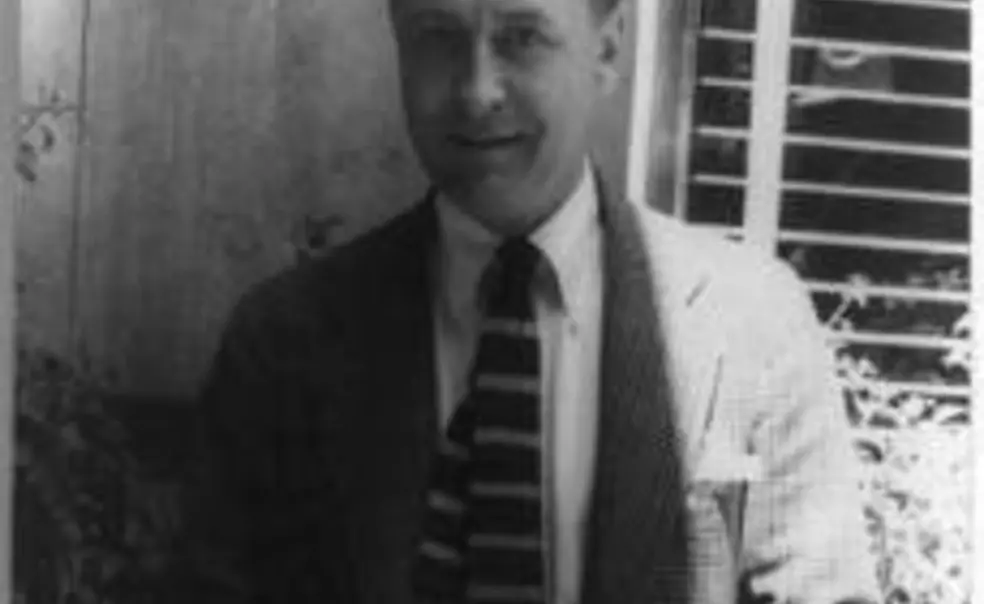From the Archives: Remembering F. Scott Fitzgerald '17
Dec. 21 marks the 70th anniversary of the death of F. Scott Fitzgerald ’17, famed novelist and loyal Princetonian (though, as many readers will recall, not a graduate – he left school as a junior and published This Side of Paradise a few years later, at age 23). Fitzgerald was reading the Princeton Alumni Weekly when he suffered a fatal heart attack at age 44.
In the months before his death, he had been working sporadically as a Hollywood screenwriter. His literary reputation had gradually dwindled in the 1930s, but the man who famously quipped that “there are no second acts in American life” achieved remarkable posthumous acclaim, thanks in part to fellow alumni like the literary critic Edmund Wilson ’16 and author Arthur Mizener ’30, Fitzgerald’s first biographer.
Fitzgerald is among Princeton’s best known alumni, and by at least one measure, one of the most influential. He’s been featured on PAW’s cover at least twice, and his life and loves continue to fascinate Princeton readers. In 1996, to mark the centennial of his birth, the University hosted a conference that examined his work and an exhibit at Firestone Library, drawn from his papers held in the University’s Department of Rare Books and Special Collections.
Fitzgerald’s legacy – or more precisely, the legacy of This Side of Paradise – has not always been regarded with warmth on campus. In a 1966 article, PAW editor John D. Davies ’41 noted that Princeton was still trying to escape the stereotypes that the novel had portrayed and quoted an unnamed admission official who said, “No one will ever know the damage Scott Fitzgerald did when he called this place a country club.” But the administration’s stance seems to have softened in the last half-century. In the Frist Campus Center, there’s even a line about Amory Blaine painted on one of the walls: “It was always the becoming he dreamed of, never the being.”
To commemorate Fitzgerald, we present his PAW memorial, written by his classmates and published Jan. 27, 1941:
Many of us of the Class of 1917 felt that a bright page of our youth had been torn out and crumpled up when we learned of the death of Scott Fitzgerald, who died of a heart attack in Hollywood, Calif., on December 21. Scott’s whole early career is typified in his very first face to face encounter with the authorities at Princeton. He needed extra points to be admitted to the freshman class, and, on his unconventional plea before the faculty committee that it was his seventeenth birthday, the members of the committee laughed and admitted him.
Everyone is familiar with the brilliant novels and short stories which brought Scott to the forefront of American writers immediately after the World War. Every important New York newspaper ran an editorial after his death discussing his unique place in contemporary American literature. We remember that every day of his life in Princeton he was, unconsciously perhaps, laying the groundwork for the very stories which afterward brought him fame.
More than any other man in college in his time, he was aware of, and intensely interested in, every fashion and custom, the history and background of every undergraduate organization, and, above all, the personalities who composed these organizations, and who later became the characters in his most popular stories. His intense interest in every phase of the University’s social life and his eagerness to dissect it on every occasion made him a rare companion – interesting, amusing, provocative, sometimes annoying, but never dull.
In later years Scott moved from one part of the country to another and seldom returned to gatherings at Princeton. Consequently, it was difficult for many of his friends to continue their close association with him, but so vividly had his personality impressed itself upon his classmates that he continued until his death to be the gay young magician with words, still occupied with proms and debutantes, and as careless of the workaday world of middle age as in college he had been of any but his favorite studies.
The Class has lost its best known member; its first to attain nationwide fame; its first to appear in Who’s Who; and perhaps its only member who in spirit never grew much older than the college boy we all knew. To his widow, the former Zelda Sayre of Montgomery, Ala., and his daughter, Frances Scott Fitzgerald, a junior at Vassar, the Class extends its sincere sympathy.
For the Class of 1917: T. Hart Anderson, Henry T. Dunn, Harold D. Comey, Ludlow S. Fowler, Robert L. Crawford III, Norris D. Jackson, Charles W. Donahoe, Perry E. Hall, Harvey H. Smith












No responses yet